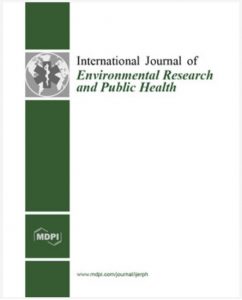Publications

Novel Approach for Glycemic Management Incorporating Vibration Stimulation of Skeletal Muscle in Obesity
Authors: Mijin Kim 1, 2, Hanlin Zhang 3, Taeho Kim 4, Yutaro Mori 5, Tomohiro Okura 6, Kiyoji Tanaka 6, Tomonori Isobe 5, Takeji Sakae 5, Sechang Oh 7
Affiliations:
- Institute of Food Research, National Agricultural and Food Research Organization, Tsukuba 305-8642, Japan
- R&D Center for Tailor-Made QOL, University of Tsukuba, Tsukuba 305-8550, Japan
- Graduate School of Comprehensive Human Sciences, University of Tsukuba, Tsukuba 305-8572, Japan
- The Center for Sports Medicine and Health Sciences, Tsukuba University Hospital, Tsukuba 305-8576, Japan
- Faculty of Medicine, University of Tsukuba, Tsukuba 305-8575, Japan
- Faculty of Health and Sport Sciences, University of Tsukuba, Tsukuba 305-8572, Japan
- Faculty of Rehabilitation, R Professional University of Rehabilitation, Tsuchiura 300-0032, Japan
Journal: International Journal of Environmental Research and Public Health - March 2023, Volume 20, Issue 6, Article no. 4708 (DOI: 10.3390/ijerph20064708)
-
Field & Applications:
- Medical
- Treatment evaluation
- Endocrinology
- Diabetes
Because obesity is associated with impaired glucose tolerance and type 2 diabetes (T2D), it is important to manage the blood glucose level at an early stage. Nevertheless, people with obesity have significantly lower resistance to muscle fatigue after exercise and exercise adherence. Therefore, we developed a novel “Relaxing-Vibration Training (RVT)” consisting of 25 postures using vibration stimulation of skeletal muscle and determined the feasibility of RVT for glycemic management.
Thirty-one participants with obesity were enrolled in a controlled trial (CT) and experimental trial (ET) based on a 75 g oral glucose tolerance test (OGTT). During the CT, participants were required to rest in a quiet room. During the ET, the RVT program (50 Hz, 4 mm), consisting of 25 postures of relaxation and stretching on the vibratory platform, was performed for 40 min. Subsequently, the participants rested as in the CT. Subjective fatigue and muscle stiffness measurements and blood collection were conducted before and after RVT. In both the CT and ET, interstitial fluid (ISF) glucose concentrations were measured every 15 min for 2 h.
The incremental area under the curve value of real-time ISF glucose during an OGTT was significantly lower in the ET than in the CT (ET: 7476.5 ± 2974.9, CT: 8078.5 ± 3077.7, effect size r = 0.4). Additionally, the levels of metabolic glucose regulators associated with myokines, muscle stiffness, and subjective fatigue significantly improved after RVT.
This novel RVT suggests that it is effective in glycemic management with great potential to improve impaired glucose tolerance and T2D with obesity in the future.
Keywords: vibration therapy, obesity, impaired glucose tolerance, myokine, muscle stiffness
In this pilot study, the acute practice of the novel RVT improved the ISF glucose concentration, FGF21 and myostatin levels, and muscle stiffness and fatigue in middle-aged and older adults with obesity. In the future, this novel RVT is expected to have a positive impact as a glycemic management program that can improve glucose regulation and fatigue in people with obesity, and further improve IGT and T2D. However, because this study was the result of an acute clinical trial, it is necessary to conduct additional studies on whether the same results can be obtained when long-term intervention with this novel RVT is conducted in diabetic patients in the future.


